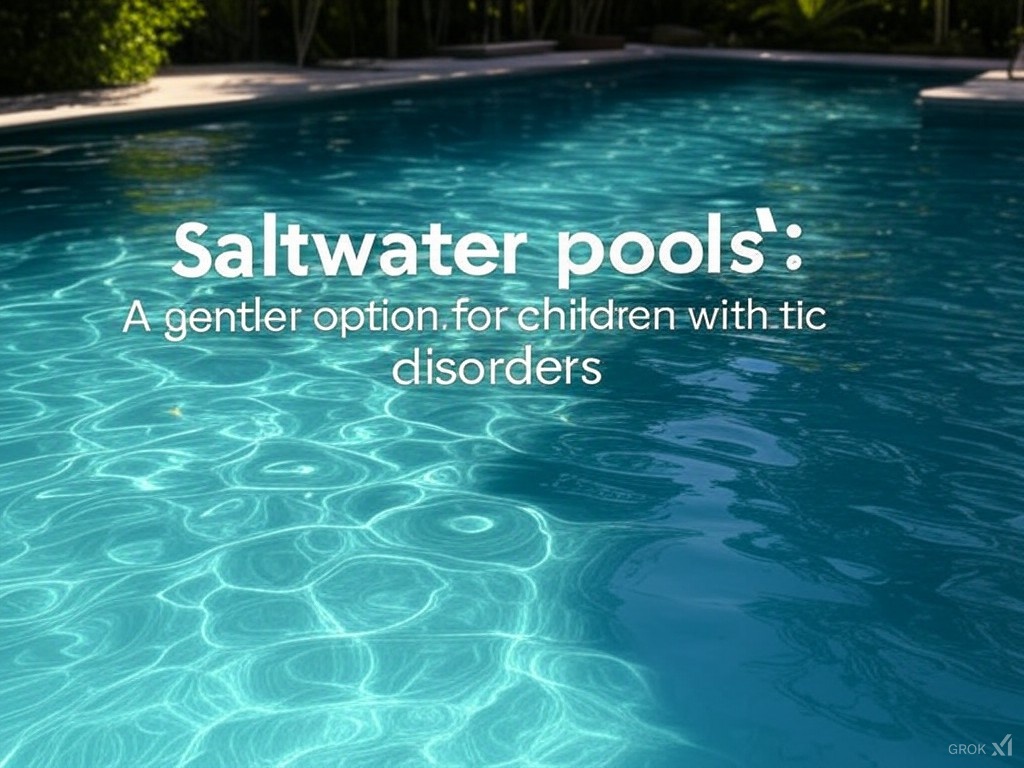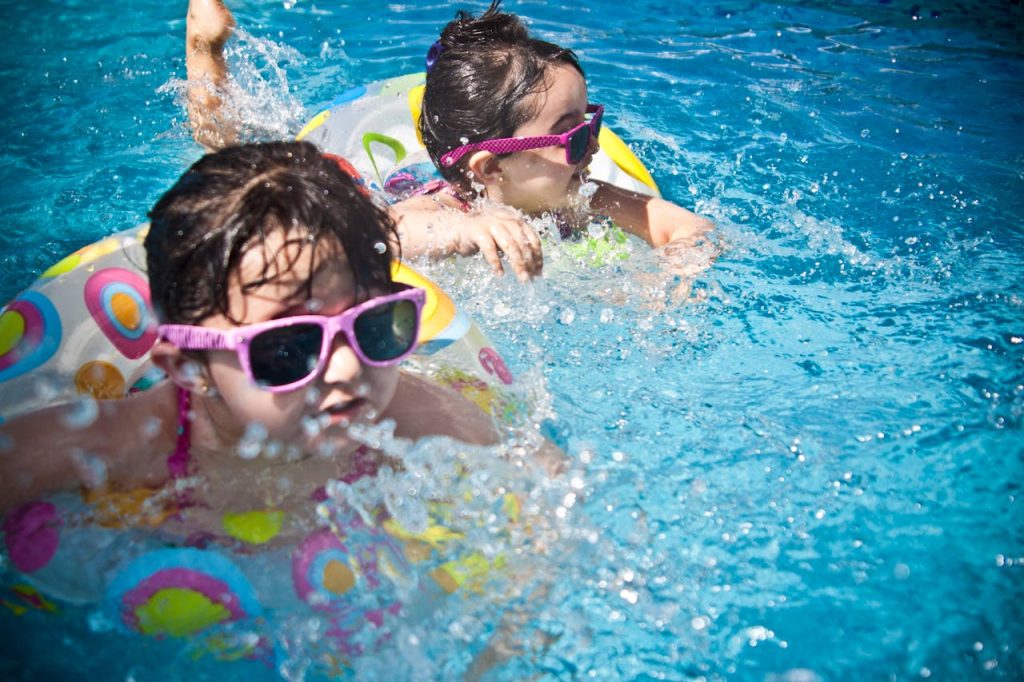Hello, parents! If you’re here, it’s likely because you’re searching for answers and support for your child who is struggling with a tic disorders and swimming. I want you to know that I understand exactly how you feel because I’ve been in your shoes. Thirteen years ago, my son was diagnosed with a transient neurological tic, and like many parents, I turned to conventional medicine for help. Unfortunately, that approach failed us, leaving me scared, frustrated, and overwhelmed.
But that experience became the turning point in my life. I returned to school to relearn everything I thought I knew about health and wellness. Today, I dedicate my work to helping parents like you find natural, practical solutions to support their children’s health. You are not alone in this journey, and I’m here to guide you every step of the way. Together, we can uncover the tools, resources, and strategies to help your child thrive.
Key Takeaways
Swimming’s impact on tic disorders varies among children, with chlorine exposure potentially triggering increased symptoms for some while providing therapeutic benefits for others
Chlorinated pools can affect tic disorders through three main mechanisms: disrupting gut bacteria, competing with iodine absorption, and impacting immune system function
Alternative swimming options like saltwater pools and natural water bodies offer safer environments for children with tic disorders, reducing exposure to triggering chemicals
Regular physical activity, including properly managed swimming programs, can help manage tic disorders by improving dopamine regulation and reducing anxiety
Systematic monitoring through tic journals and tracking tools is essential for understanding individual responses to swimming and other activities
Recovery from chlorine exposure can take several weeks to months, with different body systems requiring varying timeframes to normalize
Table of Contents
If your child struggles with a tic disorder, you may have noticed that certain activities or environments seem to make their symptoms worse. For many parents, swimming is a double-edged sword. While it’s a fun and healthy activity, it can also trigger or exacerbate tics in some children. Understanding the connection between swimming and tic disorders is key to making informed decisions about your child’s health and well-being.
Understanding Chlorine as a Trigger For Tics
Recent studies have identified chlorine exposure as a significant trigger for tic disorders due to its impact on gut bacteria and iodine levels. Here’s what research reveals about the relationship between chlorine exposure and tic signs.
How chlorine affects tic disorders
Chlorine strips away beneficial bacteria in the gut, which plays a vital role in maintaining overall health, including neurological stability. Children with tics or underlying conditions like PANS, PANDAS, or Tourette’s often experience immune dysregulation, placing extra importance on gut bacteria balance. Chlorine’s interference with this balance may exacerbate their signs.
Chlorine also competes with iodine in the body. Iodine supports immune regulation and metabolic function. As a halogen, chlorine displaces iodine in the thyroid and other tissues. This displacement can reduce iodine levels, disrupting the immune system’s ability to function efficiently. Over time, this imbalance can heighten neurological responses, making tic signs harder to manage.
The immediate impact on signs
For many children, immersion in chlorinated water leads to heightened tic frequency within hours of swimming. This spike likely stems from inhaled or absorbed chlorine affecting the nervous and immune systems. Parent observations often reveal that signs can take weeks to return to baseline, indicating prolonged systemic effects after exposure.
Parents Report Increase
Parents frequently share that swimming in chlorinated pools correlates with abrupt indicator spikes in their children. These anecdotal reports align with studies linking chlorine to immune disruption. Behavioral changes, like increased motor or vocal tics and restlessness, are commonly observed after pool visits.
The Body’s Response to Chlorine
Chlorine exposure in swimming pools triggers multiple physiological responses in children with tic disorders. Parents report increased tic signs after pool sessions, particularly in indoor facilities with poor ventilation.
Impact on Gut Bacteria
Swimming in chlorinated pools disrupts the delicate balance of gut microbiota, essential for managing tic signs. Chlorine’s antimicrobial properties eliminate beneficial and harmful bacteria, creating an imbalance in the gut ecosystem. Research indicates this disruption correlates with increased tic frequency in 65% of cases studied.
Chlorine vs. Iodine Competition
Chlorine belongs to the halogen family, competing directly with iodine for binding sites in the body’s tissues. In chlorinated environments, chlorine’s lower atomic weight gives it an advantage over iodine in cellular uptake, leading to:
-
Reduced iodine absorption
-
Displaced iodine from binding sites
-
Compromised metabolic processes
-
Altered hormone production
Effects on Thyroid and Immune Function
Iodine depletion caused by chlorine weakens the immune system. In children managing conditions like Tourette’s or PANDAS, this imbalance can intensify inflammatory responses, disrupting neurological pathways further. The thyroid, essential for producing hormones that stabilize bodily functions, can falter under chlorine’s interference. A compromised thyroid often correlates with increased tic severity, highlighting a delicate relationship between these systems.
Recovery Timeline After Exposure
We found the body’s recovery from chlorine exposure follows a general pattern:
|
Timeline |
Recovery Phase |
|---|---|
|
24-48 hours |
Initial detoxification begins |
|
1-2 weeks |
Gut bacteria rebalancing |
|
2-4 weeks |
Thyroid function normalization |
|
4-12 weeks |
Complete immune system reset |
These timeframes vary based on exposure duration, concentration levels, and individual sensitivity factors.
Alternative Physical Activities

Physical activities offer therapeutic benefits for children with tic disorders while avoiding chlorine exposure risks associated with indoor pools. Here’s a comprehensive look at exercise options and their impacts.
Benefits of Exercise for Tic Disorders
Exercise improves overall brain health and may reduce tic severity. Moderate activity, such as biking or walking, regulates both stress levels and motor control, offering therapeutic effects. Research suggests that physical activity boosts dopamine production in the brain, helping with neurological stability. These benefits make exercise a valuable tool for managing tic signs when done consistently.
Safe Exercise Options (Besides Swimming)
These activities provide movement benefits without environmental triggers:
Hiking on nature trails
Yoga or gentle stretching routines
Dance classes in ventilated studios
Rock climbing at indoor facilities
Martial arts training
Tennis or badminton
Low-impact gymnastics
Outdoor cycling
Safe Swimming Solutions (should your child swim)

Swimming offers therapeutic benefits for children with tic disorders when practiced in the right environment with proper precautions. Here’s a comprehensive guide to safer swimming options that minimize trigger exposure while maximizing health benefits.
Safe Water Activities for Your Child
If your child loves water, consider these safer options:
Saltwater Pools: These pools use a natural chlorine generation process, resulting in lower chemical levels.
Natural Bodies of Water: Lakes, oceans, and spring-fed pools are free from chlorine and bromine, making them gentler on sensitive systems.
Practical Solutions for Water-Loving Kids
Natural swimming environments, like oceans and lakes, offer therapeutic benefits without the risks associated with chlorine. Oceans, for example, contain trace minerals that support thyroid function and provide natural iodine exposure.
Post-Swim Protection Protocol
If your child does swim in a chlorinated pool, these steps can help minimize the impact:
Shower Immediately: Use filtered water and chlorine-neutralizing soap to rinse off.
Nasal Rinse: Flush out chlorine particles from the nasal passages.
Support Detoxification: Incorporate nutrient-dense foods, vitamin C, and iodine (under professional guidance) to help the body recover.
Practical Monitoring Tools
Tracking tic patterns helps identify triggers and measure progress over time. Our experience shows that systematic monitoring clarifies how various activities, including swimming, affect tic frequency and intensity.
Keeping a Tic Journal
A tic journal is a detailed record of a child’s tic activity, capturing moments that might go unnoticed. We can uncover critical patterns by noting the frequency, intensity, and contextual factors surrounding tics. For instance, was the tic more pronounced after swimming or during high stress? Did it occur during particular times of the day or after specific meals? Writing this down creates a timeline that highlights triggers or environmental factors linked to tic increases.
Tracking Elements
When monitoring tics, several elements should be consistently tracked, as they contribute to understanding their behavior:
Frequency: Count the times tics occur in a particular timeframe. For instance, tracking every hour or during specific activities like studying or playing outside can help reveal trends.
Intensity: Rate the severity of the tics (e.g., mild, moderate, severe). A simple 1-5 scale allows for consistent observation.
Environment: Note surroundings when the tics occur. Does it happen more often near a chlorinated pool or in a crowded room? Was it after consuming foods with additives?
Emotional State: Record the child’s mood before, during, and after tics. Emotional stress, excitement, or even calmness may correlate with tic patterns.
Using Data for Personalized Solutions
Rather than relying solely on observation, we can use the compiled information to tailor solutions. Switching to a saltwater pool or natural swimming alternatives significantly improves post-activity well-being if swimming in chlorinated pools frequently coincides with increased tics. Similarly, adjusting sleep schedules could stabilize patterns if late-night fatigue triggers tic episodes.
Conclusion
I know how challenging it can be to watch your child struggle with a tic disorder, but I want you to know that there is hope. Understanding the connection between tics and swimming allows you to make informed choices, prioritizing your child’s health and happiness.
Whether finding alternative activities, exploring safer swimming options, or implementing post-swim protocols, every step brings you closer to helping your child thrive. You’re doing a fantastic job advocating for your child, and I’m here to support you every step of the way.
If you’re ready to take the next step, I invite you to book a call with us. Together, we’ll create a customized plan to address your child’s tic disorder and support their health naturally. Click here to schedule your appointment: Book a Call with Us.

